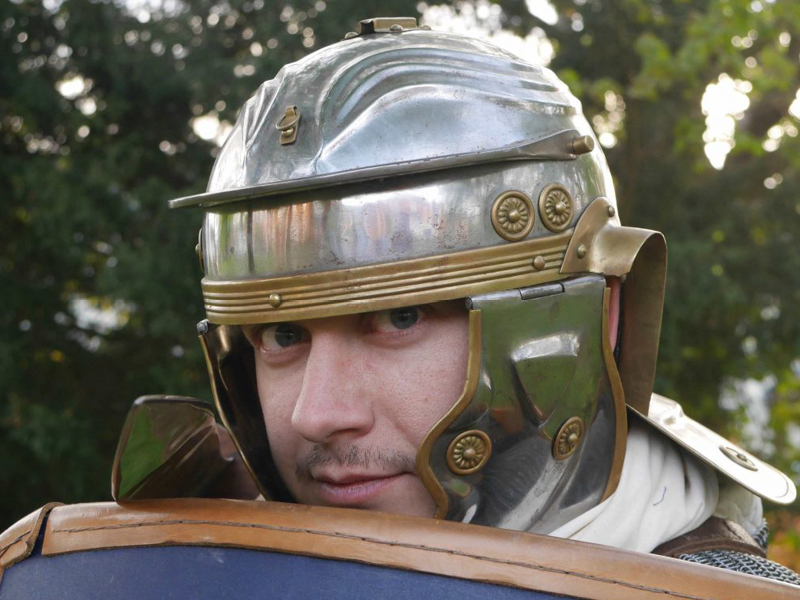MEET THE ROMANS
Come and meet the Romans on Saturday 12th March at the Friends of St Neots Museum family open day. Meet members of the Longthorpe Roman Legion, resplendent in their replica armour and find out what life was like for a Roman soldier. Try on armour (child size available), discover the work people did, the clothes they wore, what happened if they became sick and their religious beliefs.
Today we know more than ever before about life during the Roman period in this area. Major road building schemes along the A14 and the A428 and new housing developments across the region are revealing fascinating new information about life during the Roman period AD 43 – 410.
Recently published discoveries at Fenstanton (only eleven miles or four hours on foot from St Neots) include the skeletons of men and women who may have been slaves working in a meat processing factory. One male skeleton was found with a nail through his heal, revealing that the he had been crucified, and three other skeletons had both legs broken at some stage in their lives, both punishments usually reserved for slaves. The man who had been crucified also had wasted leg bones, suggesting that he may have been forced to wear leg shackles that limited his movements. What must local people have thought about the way people were being treated only a few miles away? Over the years local finds have revealed that the area around St Neots was a patchwork of small farms and growing settlements during the Roman period.

NEW FINDS
New archaeological finds at Wintringham, just east of the old historic centre of St Neots, have revealed a network of tracks and Roman roads linking local people together, including a road to the important local Roman town of Durovigutum, now Godmanchester.
Historic archaeological excavations in the 1960s provided early evidence that this area was increasingly well settled by the Roman period. Iron Age buildings and Roman pottery found in the town centre of St Neots (on a site behind Cambridge Street, where Church View stands today) confirm that local Britons were living here in their traditional round houses with thatched roofs before the Roman invasion in AD 43. Other early discoveries include a Roman villa with underfloor heating, found close to the Coneygeare in Eynesbury in the 1960s, and three stone coffins found in 1968 near the Duloe Road (Bilberry Close, Eaton Socon today). The coffins reveal that some local families were wealthy people who could afford lavish burials. Other finds in local villages also reveal the growing population during the Roman period, including a substantial villa outside Great Staughton and the Kimbolton coin hoard of sixty-seven gold staters, further evidence of the wealth of the area. The coin hoard will be on display on the 12th March.
Find out more and book your ticket on our website www.stneotsmuseum.org.uk


